
Bernardino Ludovisi (c. 1693 – 11 December 1749), also called Bernardo, was an Italian sculptor.

Bernardino Ludovisi (c. 1693 – 11 December 1749), also called Bernardo, was an Italian sculptor.
Little is known of his life. The Ludovisi were an ancient Italian family, originally from Bologna. Bernardino seems to have spent most, if not all, of his career in Rome. He is an example of a working sculptor of his time, proficient in his craft but largely forgotten today.
Ludovisi participated in several prominent sculptural projects of his day, such as the Trevi Fountain, the ongoing sculptural works of St Peter’s, and the façade of St John Lateran. He was one of six Italian sculptors allotted subsidiary tasks to the French masters Pierre Le Gros and Jean-Baptiste Théodon working on the Chapel of St Ignatius in Il Gesù. [1] He was also one of the sculptors commissioned by King João V of Portugal to supply sculpture to his palatial complex at Mafra. Towards the end of his life he was employed by the Colonna family, prominent patrons of the arts, for whom he completed the funerary monuments of Filippo II Colonna and Maria Rospigliosi Salviati (the latter commissioned by her relative, Caterina Salviati Colonna), as well as a portrait bust of Pope Benedict XIV (a gift from Monsignor —later Cardinal —Marcantonio Colonna to the Pontiff).
Ludovisi began in the vein of Baroque classicism, but as he matured he began to lean toward the French style of Le Gros and the Rococo, exemplifying a later, gentler variation of Italian Baroque which Enggass named barocchetto. His work is characterised by an attention to detail, an effective use of colour, and a painterly manner in his reliefs.


Gian LorenzoBernini was an Italian sculptor and architect. While a major figure in the world of architecture, he was more prominently the leading sculptor of his age, credited with creating the Baroque style of sculpture. As one scholar has commented, "What Shakespeare is to drama, Bernini may be to sculpture: the first pan-European sculptor whose name is instantaneously identifiable with a particular manner and vision, and whose influence was inordinately powerful ..." In addition, he was a painter and a man of the theatre: he wrote, directed and acted in plays, for which he designed stage sets and theatrical machinery. He produced designs as well for a wide variety of decorative art objects including lamps, tables, mirrors, and even coaches.
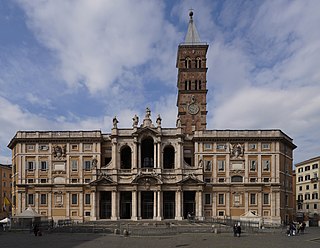
The Basilica of Saint Mary Major, or church of Santa Maria Maggiore, is a Major papal basilica as well as one of the Seven Pilgrim Churches of Rome and the largest Catholic Marian church in Rome, Italy.

The Basilica of St. Mary of the Angels and of the Martyrs is a basilica and titular church in Rome, Italy, built inside the ruined frigidarium of the Roman Baths of Diocletian in the Piazza della Repubblica.

The Chigi Chapel or Chapel of the Madonna of Loreto is the second chapel on the left-hand side of the nave in the Basilica of Santa Maria del Popolo in Rome. It is the only religious building of Raphael which has been preserved in its near original form. The chapel is a treasure trove of Italian Renaissance and Baroque art and is ranked among the most important monuments in the basilica.
Paliano is a town and comune in the province of Frosinone, in the Lazio region of central Italy.

Orvieto Cathedral is a large 14th-century Roman Catholic cathedral dedicated to the Assumption of the Virgin Mary and situated in the town of Orvieto in Umbria, central Italy. Since 1986, the cathedral in Orvieto has been the episcopal seat of the former Diocese of Todi as well.

Pierre Le Gros was a French sculptor, active almost exclusively in Baroque Rome where he was the pre-eminent sculptor for nearly two decades.
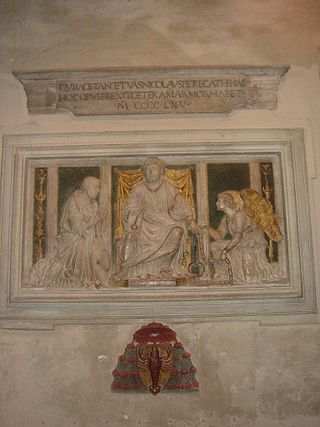
Andrea di Cristoforo Bregno (1418–1506) was an Italian Renaissance sculptor and architect of the Early Renaissance who worked in Rome from the 1460s and died just as the High Renaissance was getting under way.
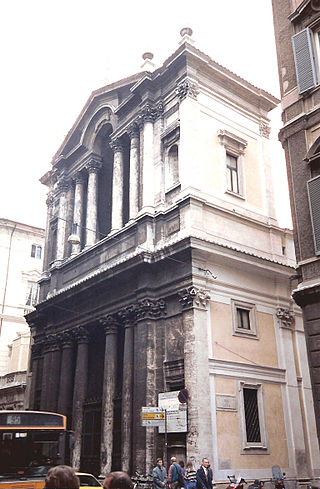
Santa Maria in Via Lata is a church on the Via del Corso, in Rome, Italy. It stands diagonal from the church of San Marcello al Corso.

Santa Maria della Scala is a titular church in Rome, Italy, located in the Trastevere rione. Cardinal Ernest Simoni took possession of the titular church on 11 February 2017. Santa Maria della Scala is a titular church.
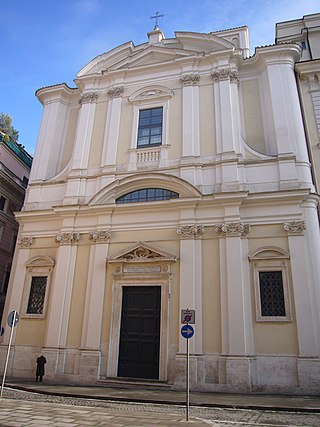
The Basilica di Sant'Apollinare alle Terme Neroniane-Alessandrine is a titular church in Rome, Italy, dedicated to St Apollinare, the first bishop of Ravenna.
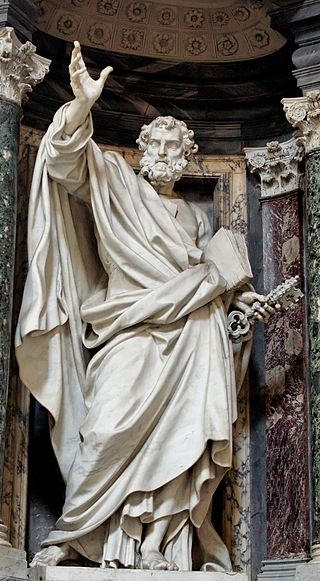
Pierre-Étienne Monnot was a French sculptor from the Franche-Comté who settled in Rome in 1687 for the rest of his life. He was a distinguished artist working in a late-Baroque idiom for international clients. In Italian sources he is often referred to as Pietro Stefano Monnot, an italianised version of his name.
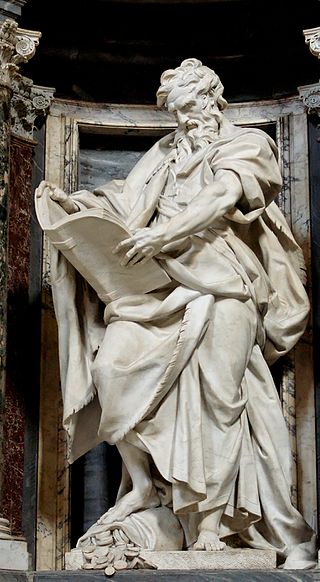
Camillo Rusconi was an Italian sculptor of the late Baroque in Rome. His style displays both features of Baroque and Neoclassicism. He has been described as a Carlo Maratta in marble.

Bernardino Cametti (1669–1736) was an Italian sculptor of the late Baroque.

Giovanni Battista Maini was an Italian sculptor of the Late-Baroque period, active mainly in Rome.

Filippo II Colonna was an Italian nobleman of prominent Colonna family. He was the 9th Duke and Prince of Paliano.
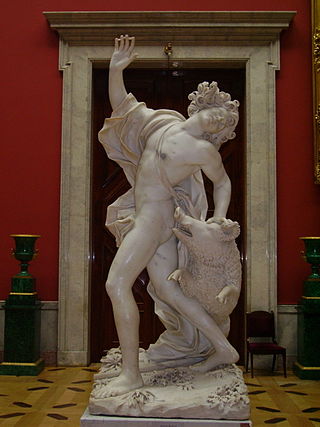
Giuseppe Mazzuoli was an Italian sculptor working in Rome in the Bernini-derived Baroque style. He produced many highly accomplished sculptures of up to monumental scale but was never a leading figure in the Roman art world.

The Chiesa della Santissima Trinità dei Pellegrini is a Roman Catholic church located on Via dei Pettinari #36 In the rione of Regola of central Rome, Italy. It stands a block away from the Palazzo Spada on Via Capo di Ferro, while a few blocks away on the Via dei Pettinari stands the Ponte Sisto.

Monuments in the Basilica of Santa Maria del Popolo are tombs and funerary monuments ranging from the 15th to the 19th centuries. Since its rebuilding in the 1470s by Pope Sixtus IV the Basilica of Santa Maria del Popolo was one of the favourite burial places for members of the papal aristocracy, clergy and literati. Foreign artists were also buried in the church due to its location near their favourite quarter in Rione Campo Marzio. The high number of tombs and monuments makes the basilica a whole museum of sculpture as Jacob Burckhardt phrased it in his famous guide of Italian art in 1855. Besides the tombs in the side chapels and the choir there are many other funeral monuments in the aisles and the transept. During the centuries several monuments were demolished and others were relocated to give place to newer ones.
Antonio Montauti was an 18th-century Italian sculptor active in Florence and Rome.